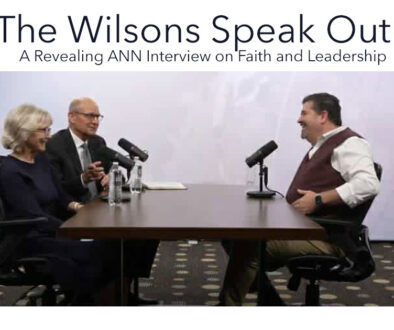What’s the Fuss About Unity?
by Larry Downing, March 26, 2017:
The mission of the Seventh-day Adventist Church is to call all people to become disciples of Jesus Christ, to proclaim the everlasting gospel embraced by the three angels’ messages (Revelation 14:6-12), and to prepare the world for Christ’s soon return. ( GC website.)
“When I use a word,” Humpty Dumpty said, in rather a scornful tone, “it means just what I choose it to mean—neither more nor less.”
“The question is,” said Alice, “whether you can make words mean so many different things.”
“The question is,” said Humpty Dumpty, “which is to be master—that’s all.” (Lewis Carroll, Through the Looking-Glass).
Unity has become the shibboleth of many who inhabit General Conference (GC) administrative positions. In spoken and written word, church leaders make their plea for unity. [It is instructive to note that the word unity, has a variety of meanings and applications. My Random House Unabridged Dictionary has the following entries under the word unity. 1. the state of being one; oneness. 2 one single thing; something complete in itself, or regards as such. 3. the oneness of a complex or organic whole or of an interconnected series. 5. absence of diversity; unvaried or uniform character. 6. oneness of mind, feeling, etc., as among the number of persons; concord, harmony, or agreement. 7. Math. a. the number one; a quantity regarded as one. b. identity. 8. (in literature and art) a relation of all the parts or elements of a work constituting a harmonious whole and producing a single general effect. 9. one of the three principles of dramatic structure (the three unities) derived from Aristotelian aesthetics and formalized in the neoclassic canon in which a play is required to represent action as taking place in one day (unity of time) as occurring within one place (unity of place), and having a single plot with a beginning, middle, and end (unity of action.)]
Those who follow pronouncements from GC administrators or read Adventist World and other Adventist publications are aware that unity has taken center stage. GC president Ted Wilson and others assure us that unity is a necessity for those who are part of God’s remnant people, and that unity is one of the key elements of the Christian message.
For example, under the title “Unity Then and Now, Part I” Mark Finley, an assistant to the General Conference president, in the March 2017 Adventist World states, “The unity of the church rests at the very heart of the gospel and matters greatly to God. Without unity the church is powerless to proclaim the gospel in its fullness to the world; worse yet, it becomes a contradiction to the true nature of the gospel,” (p. 20).[1]
This statement, and others like it, got me to thinking: If unity is as important to the proclamation of the gospel as claimed, we can expect to find numerous biblical passages that advocate and illustrate unity. Be assured, we can. For example, in Psalm 133:1 we read, “How very good and pleasant it is when kindred live together in unity!”
Likewise, the Gospels and epistles are not void of unity-talk. In his prayer recorded in John 17:20-21, Jesus requests that his followers be as one, as he and the Father are one. His petition was not realized, as soon evidenced by Judas’ betrayal. The letters to the first believers also contain unity statements. In the second creation account, man is said to have awakened from his induced sleep and opened his eyes to see this human constructed from his rib. Man, in his wonderment, proclaims, “…bone of my bones and flesh of my flesh.” The man and the woman are united; they become one flesh, Gen. 2:23-24. Centuries later, Jesus and the Apostle Paul quote this passage to affirm the sacred nature of the marriage bond, Mk. 10:8, Eph. 5:31. In previous verses, Eph. 5:21-24, the marriage bond is used as a metaphor for the relationship between Christ and the church. (This is a descriptive statement, not an imperative.). In his letter to the Corinthians, Paul reminds people that, like the human body with its various members, the believers are one through the one Spirit and the one baptism, I Cor. 12:12-13. Paul develops the unity further in Ephesians 4.
The fourth chapter of Ephesians might be considered Paul’s magnum opus unity talk. He challenges his readers to maintain the unity of the Spirit in the bond of peace, v. 3. “There is,” he says, “one body and one Spirit, just as you were called to the one hope of your calling, one Lord, one faith, one baptism, one God and Father of all, who is above all and through all and in all, vv. 4-6. In the same chapter, within the context of the gifts God has bestowed upon the believers so that they may equip the saints to be more effective in their building up Christ, Paul writes, “…until all of us come to the unity of the faith and the knowledge of the Son of God, to maturity, to the measure of the full stature of Christ,” vs. 13.
These texts, save for Eph. 4:3, are declarative or descriptive, rather than imperative. We do not find the Bible writers often admonishing people to be united. There is one additional text that, in the KJV, uses the word “united,” ”O my soul, come not thou into their [Simeon and Levi’s] secret; unto their assembly, mine honour, be not thou united: for in their anger they slew a man, and in their self will they digged down a wall” (Gen. 49:6.) In a modern translation the text reads, “May I never come into their council; may I not be joined to their company—for in their anger they killed men, and at their whim they hamstrung oxen” (NRSV).
In contrast to the texts that promote, describe or otherwise reference unity are numerous examples of disunity and animosity evident among those who would have better served their people had they not acted as they did. The Cain and Abel story is an early example of a relationship gone sour. More disagreements await. Earlier in time, if time is applicable to the account, is the catastrophic break between the Creator God and Lucifer and his minions that proceeded the Fall.
As one progresses through scripture, examples of disunity are too numerous to enumerate. Abram and Lot. Saul and David. Elijah and Ahab. One dramatic and traumatic break is recorded in I Kings 12 and 2 Chronicles 10. When King Solomon died, Rehoboam, one of Solomon’s sons, was appointed king. Jeroboam and others in the kingdom requested that King Rehoboam lessen the financial burdens that Solomon had imposed upon the people. In consultation with his close friends, Rehoboam rejected the request and instead assured his people he would demand even more than his father. In response, the people broke relationship with Rehoboam and appointed Jeroboam king over all Israel. The house of David, in one fell swoop, moved from the house of David to the Room of David, a room inhabited by Judah alone (I Kings 12:20). And the breach was never restored. How sad and how unnecessary. Separations are like that. The power of one. One individual’s stubborn refusal to adjust to reality can bring ruin to what had once been a thriving enterprise. Once the break occurs, like Humpty Dumpty, all the king’s horses and all the king’s men….you know how that nursery rhyme ends.
The examples of disputants multiply and continue into and through the Newer Testament. The most notorious of the disunity events may be the break between Judas Iscariot and Jesus the Christ. However, conflict and disagreement are not limited to the one betrayal. Disagreements that result in separation are found between and among the most influential of Jesus’ followers.
There are the dust-ups between Paul and Peter. Paul and Barnabas. And there is Paul’s response to the decrees adopted by the Jerusalem Council. How does one reconcile Paul’s negation of certain requirements established by the Council? The gathering of the brethren decreed that Gentile converts to Christianity are not to eat food offered to idols.
Paul, upon his return to his mission post, explained to Gentiles that food offered to idols is irrelevant to one’s Christian practice. Have no truck with such primitive thought, he admonished. The strong know that idols do not exist. The weak? That’s another matter. For their sake, refrain from eating food offered to idols (I Cor. 8:1-13). The reader will note the absence of any reference to the Jerusalem Council’s action regarding food offered to idols. It was a moot point. Why this lapse? Was food offered to idols a cultural thing? If so, any lessons for us Adventists?
From an earlier time, shortly after Pentecost, the Hellenists charged, as recorded in Acts 6, that the Hebrews were neglecting the non-Hebrew widows. The charge was that when food rations were distributed (by the disciples?) the Hellenist widows came out on the short end of the stick. In response, a cadre of deacons was selected to implement a new food bank policy.
When we look further, we find the biblical writers on numerous occasions address the disruptions among the flock. Think I Corinthians, and other of Paul’s writings. His letters to the first believers do not provide evidence that these first Christians moved forward in unity. Time and again he takes the Corinthian believers to the woodshed. He can hardly contain his anger when the reports of how some of the people behave are told him. He accuses these saints of practices that not even the heathens condone (I Cor. 6:1ff). No, we cannot look to Paul for key texts to support that unity was a hallmark among the first believers. There may have been a group who agreed on certain matters, but there were others who did not agree. There apparently were groups that were united in opposition to what united.
Within the context of definitions listed above, unity, when applied to a group of diverse people, as we have in the contemporary North American Adventist church is a grand theory. Think of it: everyone united in a common purpose. Or is this such a desired end? Companies who base their existence and success on creating and producing products that appeal to consumers suggest otherwise. Google, Microsoft, GM and other successful marketing organizations welcome diversity and allow significant structural and behavioral latitude among its team members. Management intentionally accommodates to those who are in the organizations’s creative divisions rather than the other way round.
To be sure, members of a successful organization share a desire to do well what they do. They are committed to the organization’s success and direct their endeavors toward a common goal, as defined by management or other responsible bodies. Management, in a sense, has the role of cheerleader, encourager and, perhaps its most important role, to hold the organization to its Mission Statement.
The Adventist Mission Statement printed above, despite limitations, sets the agenda for the Adventist. (Why the statement is not printed at the top of the GC website is a puzzle.) The Mission Statement is limited in that it is an “in-house” statement. If you doubt otherwise, invite a colleague at work or friend to read the statement and await the response. If you desire further evidence that the statement is not well understood, ask people who attend your church to explain what the “Three Angels’ Messages” means. (For variety, ask several Adventist pastors to explain the statement.) Despite the lack of comprehension, the Mission Statement targets specific goals: call people to become Jesus’ disciples, proclaim the gospel, as found within the three angels’ message, and, prepare the world for Christ’s soon return. The statement makes no reference to a criteria that defines who is or who is not a “genuine” Adventist, nor does the statement define who by gender is or is not eligible to be appointed a church leader. We can assume such concerns, and other administrative matters, are not primary to those who wrote and adopted the Adventist Mission Statement. If they were, we could expect them to be included.
When management has been too much occupied with matters that are not defined in the organization’s Mission Statement, there is high probability that trouble awaits. When our church administrators emphasize tangential matters that detract and divert the church from accomplishing its mission and that alienate significant segments of the church—think millennials and younger—rough times await. When management directs organizational resources and energy on peripheral or parochial matters that detract from the Mission Statement; is not willing to adapt to changing times; places roadblocks in the organizational pathway, or denies organizational or marketplace realities, diminished returns lie ahead.
It is to be expected that discord and dissent are the rule within groups. Management’s challenge is to accept the discord and work with and around it. Thinking people will not always agree. If one insists upon consistent uniformity and a predictable state of unity, a visit to the cemetery will fulfill this requirement. There, among the dead, is to be found complete, true unity! In contrast, where there is life, there will be diversity and high probability of discord. Those who pluck a one-note unity tune deny reality. (The same is true for those who promote an endeavor that promotes everyone’s involvement. There is no human endeavor that holds potential for everyone’s involvement or “buy-in.” To expect or promote otherwise evidences a lack of understanding of reality and denial of human behavior and diversity.)
In this brief excursus on unity we have found texts that address unity, and have found occasions of disunity within the early Christian communities. Below are listed, for your consideration, conclusions and observations that arose from this study.
- Successful managers/administrators encourage diversity.
- Effective administrators encourage an environment that enables individuals with diverse beliefs, skills and practices to achieve superior results.
- Scripture offers more examples of disunity among people than unity. (God’s purposes work themselves out, despite human failure or contrary efforts.)
- When calling for unity, it is helpful to define the word.
- Unity is not always the ideal.
- Those who call for UNITY might well consider uniting with those to whom they address their pleas. (Change, adaptation is not a one-way street!)
- Effective leaders affirm and enhance the diversity found within a living, dynamic, creative organism.
[1] The March 2017 Ministry magazine published an article by the same author. The Ministry article is slightly edited from that found in the Adventist World article, but carries the same title, with an expanded sub-title.
 Lawrence (Larry) Downing, D.Min., is retired after more than 40 years as a parish minister serving Seventh-day Adventist churches on both Coasts. He was also an adjunct faculty in the School of Business and the School of Theology at La Sierra University. He is married to Arleen. Together, they have three grown children and six grandchildren. Larry and Arleen reside part time in Rancho Cordova, CA and in San Luis Obispo, CA.
Lawrence (Larry) Downing, D.Min., is retired after more than 40 years as a parish minister serving Seventh-day Adventist churches on both Coasts. He was also an adjunct faculty in the School of Business and the School of Theology at La Sierra University. He is married to Arleen. Together, they have three grown children and six grandchildren. Larry and Arleen reside part time in Rancho Cordova, CA and in San Luis Obispo, CA.




